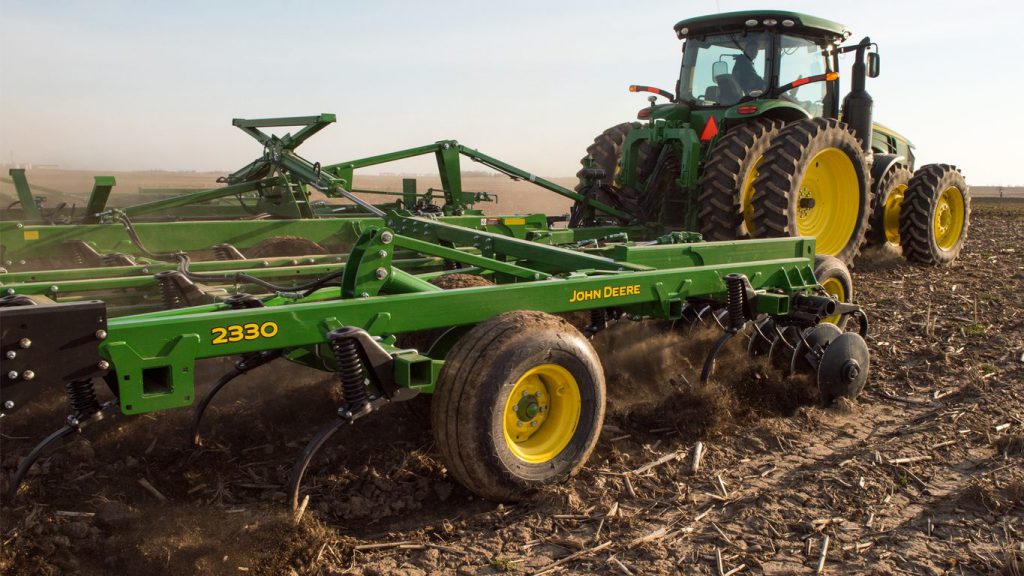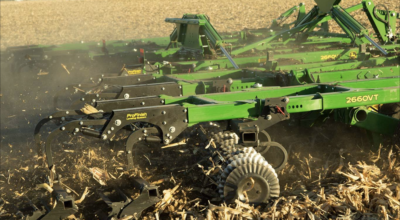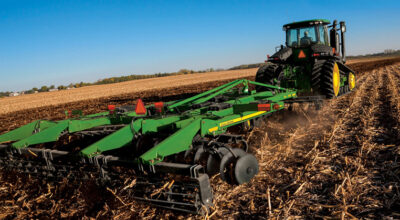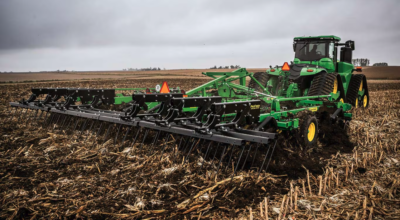As the seasons change, there’s no better time to prepare for spring tillage. With a few tips from John Deere, you can ensure that you have the perfect seedbed for all of your planting needs once winter comes to an end. Here are some helpful tips for spring tillage as you look ahead to the new season.

- It’s important to prepare your tractor before you head to the field. Ideally, you do not want to have to worry about how compaction may negatively impact your yield as you prep your soil for spring.
- Make sure you have the right ballast. This may be a lighter ballast than what you had during the fall season. The recommendation is 115-145 pounds/PTO horsepower.
- Adjust your tire pressure and ensure that you have them as low as you possibly can according to tire recommendations. 10 PSI or less is ideal.
- The proper range for slip on a wheeled machine is 8-12 percent. On a track machine, it is 2-5 percent.
- Higher floatation wheels are more ideal. This reduces the impact of your tracks during your tillage operation.
- When properly ballasted, wheeled machines can be just as efficient out in the field as track machines.
- Reducing PSI on a track machine can go a long way when it comes to reducing the impact of compaction and depth.
- Upgrading to an IF tire can reduce the impact of compaction even more.
- Utilizing VF tires can help you achieve a tire pressure below 10 PSI.
- Ballast your tractor appropriately for the 8-12 percent slip and the secondary tillage job.
- Set the tire pressure to the spec of the particular machine you are using out in the field.
- Spread out your footprint as much as possible to minimize your imprint.
As you prepare for spring, don’t forget to give your machines the proper checkup they need after the long winter. Start by reviewing your operator’s manuals to ensure that you’ve covered all of the maintenance checkpoints as they pertain to your engine, transmission, and fuel tank. For more questions on how to prepare your equipment for spring tillage, watch the video below.
If you have any further questions about operating or maintaining your machinery in general over time, you can also contact your local John Deere dealer.
If you enjoyed this post or want to read others, feel free to connect with us on Facebook, Pinterest, or Twitter!


